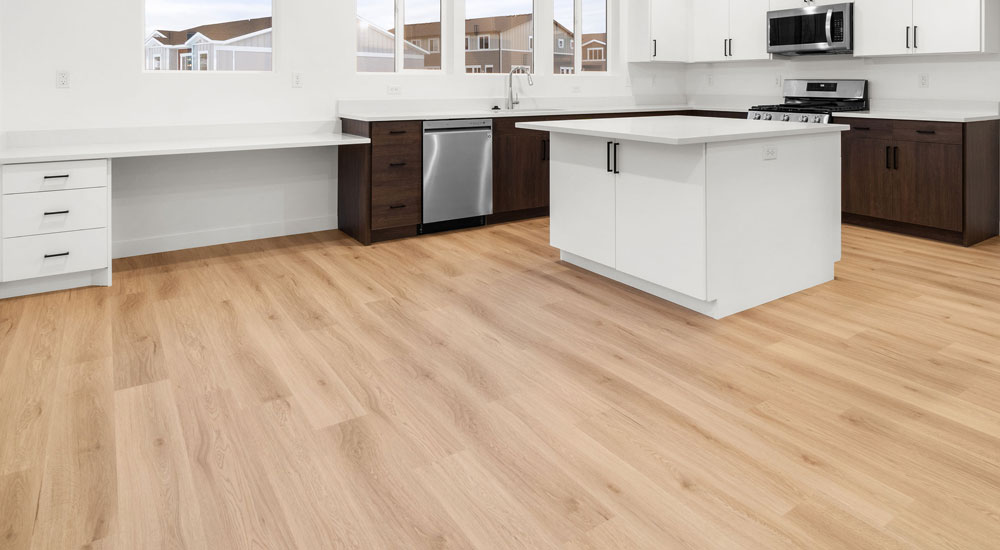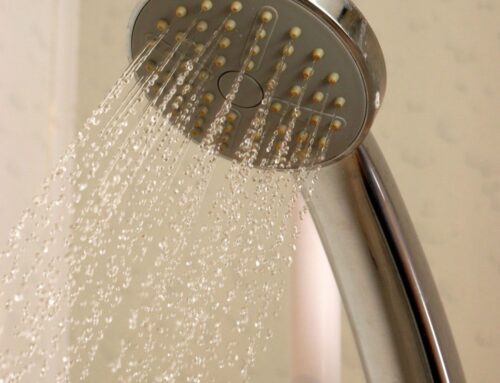 Laminate has become a very popular choice for flooring in homes, in large part because it can give you the look of wood without the high maintenance of a wood floor. Though they don’t require as much maintenance, laminate floors do need some to ensure they stay in great condition. Here are some dos and don’ts for cleaning laminate floors. One important note: It’s always a good idea to read the literature for your specific flooring to ensure you are following manufacturer guidelines and using cleaning products that work on your flooring.
Laminate has become a very popular choice for flooring in homes, in large part because it can give you the look of wood without the high maintenance of a wood floor. Though they don’t require as much maintenance, laminate floors do need some to ensure they stay in great condition. Here are some dos and don’ts for cleaning laminate floors. One important note: It’s always a good idea to read the literature for your specific flooring to ensure you are following manufacturer guidelines and using cleaning products that work on your flooring.
DO: Clean Often
Like other flooring choices, a great way to ensure longevity and prevent issues with your laminate flooring is to clean frequently. This does not mean a full deep clean every time. For laminate flooring, sweeping and dry mopping regularly is sufficient to keep the floor clean and looking great. Laminate flooring can get scratched and scuffed by dirt and debris, so if your floor sees a lot of traffic, sweeping or spot cleaning daily is a good idea. Deep cleaning is not needed very often – most experts recommend deeper cleaning (mopping) every two to three months.
If there are scuffs, small marks, or stains on your floor, you don’t need to deep clean. For scuffs or small marks, use a clean, dry microfiber cloth to buff it out, by wiping it in circular motions. For stubborn stains, mix a solution of lukewarm water with a splash of vinegar in a bucket. Dip a microfiber cloth in the solution and wring it out well, then use the cloth to buff away any stains.
DON’T: Use A Lot of Water
Water and laminate flooring are a very bad mix. Laminate is made of compressed particleboard or wood fibers that are covered with a clear resin layer to create the finished look. When water soaks through the top layer, it can destroy the particleboard or wood fiber layer below. That can lead to warping, buckling, and splitting. It is best to avoid using water on your laminate in any form, including steam cleaning, but if you feel like your floor could use a deeper clean with a cleaning solution, use it and any water sparingly, and make sure you dry the floor thoroughly when you are done cleaning. If your cleaning products are leaving a film or residue on your floor, you are using too much.
DO: Clean Up Spills Immediately
Liquids can stain your floor or, worse, soak into it causing permanent damage. If something spills on it, clean it up immediately to avoid damage that may require a costly repair. A cleaning expert with Memphis Maids suggests gently blotting the liquid with a dense microfiber cloth or sponge until you absorb the spill entirely.
DON’T: Use Abrasive or Acidic Products
The protective coating on the top of your laminate flooring can be stripped if you use harsh cleaners and chemicals, so it is best to avoid them. If you want to mop the floor, you can use a mixture of one teaspoon of dish soap and one gallon of water in a spray bottle or a laminate-specific cleaner. If you will be using a laminate cleaner, check the recommendations from your flooring’s manufacturer. As with any liquid, be sure to use the cleaning solution sparingly and wipe the floor dry when you are done cleaning.
DO: Use the Right Tools
Keep in mind that laminate can scratch, so when selecting cleaning tools, softer ones that will not scratch are best. Microfiber clothes and towels, microfiber sweepers or mops, sponges, soft-bristle brooms, and similar tools are best for cleaning your laminate floor. If you use your vacuum, use the hard floor setting to avoid scratches from the beater brush or attachments with soft bristles that do not rotate. Never use steel wool, floor buffers or polishers, or other similar tools to clean or remove dirt, stains, etc.
DON’T: Wax, Polish, or Try to Refinish Your Floors
These aren’t wood floors, so they shouldn’t be treated as such. With proper cleaning, your floor should maintain its shine, negating the need for any additional work such as waxing or polishing. In fact, wax and polish can leave residue or strip the protective coating on the top of the flooring that gives it the shine (not to mention the additional damage to layers below it). Laminate floors also cannot be refinished like wood floors due to their construction. If part of your flooring is damaged, it will need to be replaced.
DO: Protect Your Flooring
To help limit the dirt and debris and avoid scratches and other damage, take some simple steps to protect your flooring:
- Use felt pads under the legs of furniture to prevent dents and the possibility of scratches when items are moved.
- Never try to slide anything heavy across the floor. Use protective mats when moving heavy furniture, even if you are using a dolly or the furniture has wheels or castors.
- Place rugs in high-traffic areas to prevent wear and tear.
- Use laminate-approved vinyl rug underlays under area rugs, which will keep the rug backing from sticking to your floor and keep it in place.
- Use door mats inside and outside at all exterior doors to reduce the amount of dirt that gets tracked into your home and onto your floor.
- Clip your pet’s nails, which can scratch flooring when left untrimmed.
- Keep pet bowls on a protective mat to help avoid spilling and excess water on the floor.
- Remove heels and shoes with cleats before walking across your laminate floor. Heels and cleats can leave marks on your floors.
Looking for your dream home? Liberty Homes has been building new homes in Utah for nearly 30 years. We take pride in our trade, crafting each home as if it were our own. Our quality, affordable homes are energy smart and thoughtfully personalized for your active Utah lifestyle. We currently have townhomes available in Salt Lake County, single-family homes in Heber City, and 55-plus single-family homes in West Jordan. Contact us today to find your dream home.

Want home decorating and maintenance tips, craft ideas, recipes, and more delivered right to your inbox?
Sign up for our monthly newsletter:




